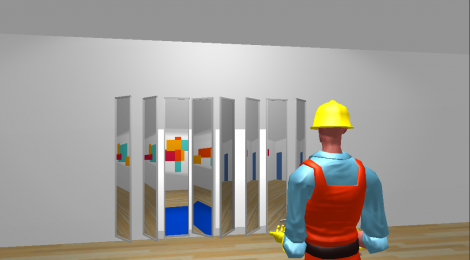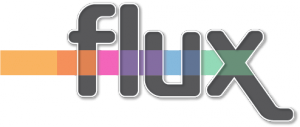
Newsletter #7
With the team renewed with energy, we plunged into a week-long exploration of a different concept. We spent time individually brainstorming concepts, ranging from fully-formed to modular ideas that could be combined, and then presented them to the team. We identified the strongest candidates and deepened them, considering what kind of technology would drive it and how the aesthetics of it would best communicate the concept. By Wednesday, we chose our concept for this week: A series of mirrored panels that chooses one person in the room, tracks that person, and prevents that person from seeing his or her reflection in any of the mirrored panels. If there are multiple people in the room, the panels will reflect the background people toward the tracked person.
This concept is a bit of a technological break from our other works. We entered the semester with the goal of pursuing physical computer with technologically simple components which meant we were avoiding PCs. Since we want to pursue this concept, we felt it would be best to relax that constraint so that we could use a Kinect and a PC for the tracking.
Moreover, the artist statement we produced last week was crucial for harmonizing ourselves as a team. While it became a focal point for discussion and spurred meaningful self-reflection, we’ve decided it would best to set aside that specific wording going forward. We felt that although we agree with what is written, it might prove too difficult to prototype and explore new concepts while balancing all of the layers we identified in our artist statement. We plan to revisit the statement when we have a larger body of work.
Lastly, Jason has been making progress on our “Jars” prototype in parallel with our ideation phase. Using Elwin’s custom Arduino PCB in conjunction with an SD card reader/writer and a microphone, he was able to save audio files to the SD for later playback. Now that the full functionality of Elwin’s PCB has been confirmed, our next step is to test playing the audio files from the SD card through a set of speakers. When that is finished, we will be able to finalize our PCB design and order a test board, hopefully in time for halves. Creating our own custom PCB will not only save us money but will also significantly decrease the maintenance requirements of our project.
Looking forward to Halves
Our project has been an unusual journey in the context of more traditional ETC projects. We’ve decided that our prototyping phase needs to be lean so we’ve scaled back on ordering parts for and producing physical prototypes. We’ve opted for virtual prototypes to communicate our ideas since we are confident we can fabricate what we design.
Our plan leading to halves is to communicate our process to the faculty. When we pitched, we made it clear that this project is an exploration in physical storytelling with installations. We acknowledge it’s been a messy process sorting through our own definition of art and devising prototypes that satisfy our ambitions for creating that art. It’s important to us that we do not create tools or cool technological toys but something that can elicit a reaction from people. This process has been invaluable and we are excited to share it at Halves.
Current Challenge
Our challenge this week was determining our identity in relation to our artist statement. As previously mentioned, we’ve decided to relax some constraints we set on ourselves to purse concepts we found meaningful. The time is ticking down to our fabrication phase and we’re pushing ourselves to generate more ideas for these installations. We’re eager to explore another idea next week!
